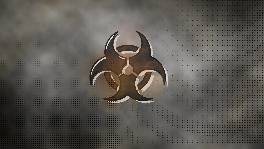Project Coast
June 12, 2021 | 3 min read

June 12, 2021 | 3 min read

Apartheid-era South Africa was under the constant threat of growing domestic unrest and potential conflict due to escalating tensions with international superpowers. To prepare itself, the South African government laid the foundation of Project Coast, an ingenious but deadly and highly obfuscated biological warfare program in the 1980s.
The South African government, via its stint with the two world wars, witnessed the use of biological warfare and realized its potential. In the 1960s, military groups from South Africa were deployed in Rhodesia to restrict the guerilla activities where they were able to experience the use of biological weapons first-hand. The largest anthrax epidemic in the past 200 years is attributed to this counterinsurgency effort of the South African government; affecting thousands of cattle, along with tens of thousands of human cases and fatalities being reported. This is thought to be the progenitor of Project Coast. The military personnel involved in the counterinsurgency were closely associated with the birth and development of Project Coast. P.W Botha, the then state head of South Africa and the chief of the defense force Magnus Malan, enlisted Surgeon General Nieuwoudt to launch the program. Wouter Basson, alias Dr. Death, a young military doctor, was recruited by the general to be the director of Project Coast.
Project Coast was a vast network with contributions from different universities, research testing centers, and scientists; who were forced to sign documents swearing them to secrecy and were subjected to extensive security clearance procedures. One of the program's main objectives was to source and test a wide variety of biological pathogens that included 45 different strains of anthrax, E. coli (which causes severe vomiting and diarrhoea), and Yersinia enterocolitica (closely related to the bacteria that causes plague), to name but a few. Every organism collected was nurtured and grown in sufficient quantities to freeze-dry. The scientists at Project Coast developed innovative methods of transmitting these pathogens in a 'target-specific manner.' Anthrax was rolled up in cigarettes, and holes were drilled into bottles and cans; aldicarb (poisonous by ingestion and skin contact; death is caused by muscle weakness, accumulation of fluids in the lungs, respiratory and heart failure, epileptic fits, and coma) was added to orange juice, and Salmonella (pathogenic microorganism which can cause various disease states, e.g. food poisoning and typhoid fever) was added to sugar. Botulinum toxin (most dangerous toxin known to man, kills by respiratory arrest and is one million times more poisonous than arsenic), and thallium to beer, paraquat (a hundred percent mortality rate can be expected with a minuscule dosage) to whisky, lead to deadly cocktails being concocted. To determine the efficiency of the poisons, they were tested on primates, pigs, and beagle hounds, leading to countless animals being tortured to death. There were also attempts to infect the Swapo refugee camps outside Windhoek by polluting the water supply with V.cholerae.
Another wing of Project Coast dealt with genetic engineering to formulate a 'black bomb'; bacteria or other biological agents that would selectively affect the black population but would not impact the whites in any manner. The idea was to incapacitate or wipe out entire regions where insurrection was taking place. Attempts were also made to curb the increasing black population by developing an antifertility vaccine; this was thought to comprise 18% of all projects undertaken at Project Coast. Though the scientists involved in the program attested that there is no difference in the physiology, biochemistry, and endocrinology of different ethnic groups, making it virtually impossible to curate a racially biased vaccine, Basson insisted that this was the most important project that they would work on and urged them to proceed with the research. The aim was to administer the vaccine clandestinely by interlacing it with food and water, rendering the recipients sterile.
Details regarding Project Coast were uncovered due to a public hearing held in 1988 by the South African Truth and Reconciliation Commission, the documents presented in the hearing, and based on the evidence that various witnesses gave at the trial of Dr. Wouter Basson. The trial of Basson begun in 1999, where he faced 67 charges, including drug possession, drug trafficking, fraud, murders, conspiracy to murder, and theft. However, on 11th April 2002, the verdict was handed down; Basson was acquitted of all charges against him. Though Project Coast was initially conceptualized as a defensive program that fell under the control of the military, it went far beyond the strict constraints of such a defensive program. With shocking crimes being committed against foreign nationals, racially prejudiced acts against the black population, and subjecting the lab animals to a number of inhumane practices, Project Coast became an integral part of the several injustices that took place during the oppressive apartheid regime.